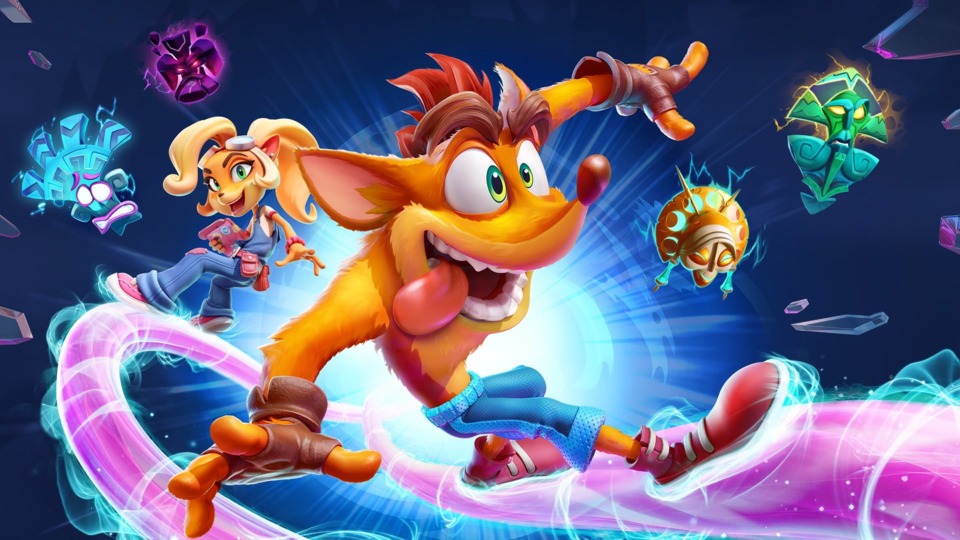
I’ve tried a few times to write something to follow my last blog post, but the only thing that will stick is more talk about cartoony platformers. It seems that there’s more to say on the subject, and what better things do I have to do? Since the last blog, I completed the Crash Bandicoot N. Sane Trilogy, and the “fourth” game in the series was unveiled. Looking at the series with a critical eye mirrors what I see as the lifetime arc of the 3D platforming genre. With Crash as the template, I will try to explain how 3D platformers grew, why they went away, and how they are coming back.
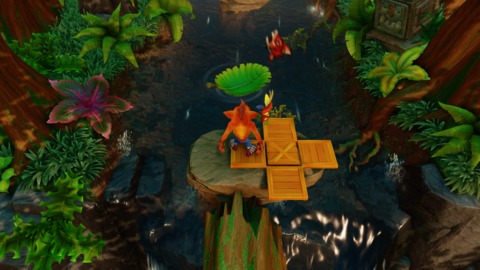
The first entry in every 3D platforming series has the important task of establishing the character’s universe. Everyone loves the worldbuilding and character work in RPGs, but it’s just as important in platformers, albeit in a different way. I said last time that mascot design is the most important thing, but the world the character lives in comes right after. In a genre all about interaction with the environment, it’s important to make sure that they fit in thematically.
With our detached lens of hindsight, the original Crash Bandicoot is about as good an introduction as you could want. Design-wise, the PS1 release has some problems, but the remake ironed them out for the most part. The Wumpa Islands is a jolly setting filled with cartoon wildlife, native tribes just barely riding the line of being offensive, and invasive factories belonging to Dr. Neo Cortex. The world takes inspiration from Looney Tunes (Crash himself could be a distant cousin of the Tasmanian Devil). In this case, it works great, with Crash’s neon fur fitting right in with the vibrant scenery.
Common consensus on the trilogy is that Crash 1 is the lesser game, but there’s a simplistic charm that wins me over. He has barely any moves, but the level design complements it. It’s not going for anything crazy, but it is satisfying and appealing enough to make it worth playing today. I also really admire the progression: it’s the only game in the trilogy to have a totally linear world map. As a result, there’s a clear escalation in setting as you go from the sunny N. Sanity Beach to the deadly, mechanical Lab. I’m probably giving the game excess credit, but it’s a touch that presents a continuous adventure. It’s one of the things that I think was lost in the sequels.
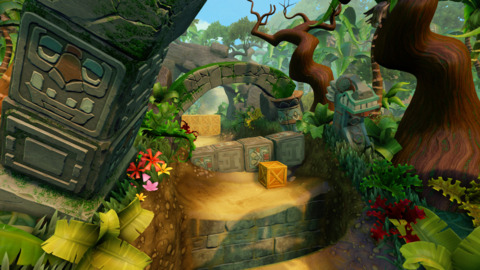
Oh, and Crash’s character design is pretty good, too. He’s just a triangle with stick legs, but he also has a clearly defined personality trait (n. sanity). I geeked out over this stuff last time, so I’ll leave it at that. Just understand that mascot design is deathly important to any platformer. Anything worse than Ty the Tasmanian Tiger is at the point where it’s not even worth talking about anymore.
To support my thesis that Crash is emblematic of his genre at large: What other series followed his lead in their first game? Spyro captures fairy-tale whimsy that’s perfect for a game about dragons. Ape Escape’s cartoonish art style and malleable monkeys work great for a time-traveling adventure. Sly Cooper’s comic-inspired noir stylings is the ideal backdrop for the sneaky thief he is. Sequels in these games would expand gameplay potential and more, but they all hit upon an iconic feeling right away. If a platformer doesn’t come out of the gate with this confidence, it’s probably headed to the bargain bin.
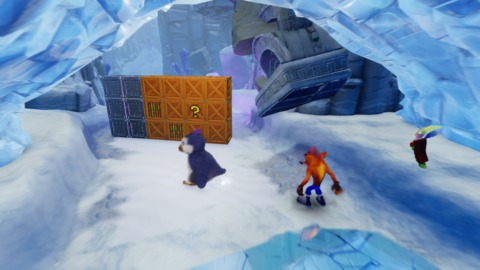
Moving onto Crash 2 shows a pattern that’s common in many sequels. This is when the team refines everything from the first entry and paves over what went wrong. In Crash’s case, this is downplayed; I can’t point to any one thing and call it a radical change. He’s got a slide move now, Nitro boxes are now a thing, and you’re now going after crystals. None of these things are flashy. But perhaps the understated nature of these additions is to the game’s benefit. They all fit right in with what was established in the first game. Indeed, players who are more familiar with the sequels might be surprised to find out that sliding and the like are absent from the original. They’ve become part of the franchise’s identity thanks to how well they are integrated. Still, the end result is just supplementing the base gameplay. That’s certainly a good thing. Crash 2 is almost unanimously considered an improvement over the original. When I think of mascots that radically change with sequels, like Naughty Dog’s own Jak and Daxter, it puts a bad taste in my mouth.
Crash 3 is a bit of a stranger beast. With the fertile setting of a time machine, more diverse level concepts than ever before are possible. Out of the trilogy, I found the third game’s platforming stages to be the most engaging. The level design is complex and inventive to a new degree. The “flow state” that’s the center of this platforming style is perfected here. It’s obvious that the team was banging out levels with confidence. But the excellence here is often diluted by the rest of the game’s content.
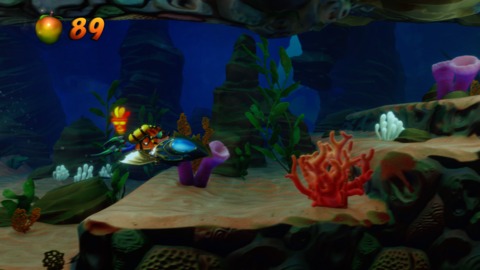
Crash has always loved riding on an animal’s back and running away from giant pursuers. But those stick close enough to the platforming mechanics that it doesn’t feel like a big shift. Crash 2 also has those jetpack levels, which… bleugh. The third game ramps up the variety so much that the focus is very nearly lost. We have tiger levels, jetski levels, scuba levels, airplane levels, and motorcycle levels all competing for attention. I hear that the controls for vehicles were made somehow worse in the remakes. Regardless of the platform, Crash Team Racing this ain’t.
Meanwhile, some game-breaking power-ups get tossed into the platforming just for fun. They aren’t enough to diminish the quality of the level design, but at a certain point it feels like Naughty Dog threw their hands up and let the player do whatever they wanted. When the game was released, I’m sure that some players were excited to try these new gameplay styles out. Modern enthusiasts, on the other hand, tend to prefer a smaller set of mechanics refined to a sharp point. At least, this is what I gather from the most popular platformers in recent years.
Crash 3 is still my favorite of the trilogy, but the scattershot focus does it no favors. And this, readers, is my belief of why 3D platformers went away. Nearly every series that rose to prominence in this era put more and more focus on alternate gameplay styles, at the expense of the main draw to thier games. Shall we run through some examples? 3D Sonic games have been stuck under the weight of this problem since the first Adventure, and the stigma has stuck with the hedgehog ever since. The Spyro sequels added a bunch of little quests and backtracking that makes the formula far less addicting. Banjo-Tooie’s ambition with gigantic interconnected worlds, plentiful minigames, and extra playable characters destroyed the original’s compact design. Sly, too, added endless playable friends and vehicle sections. Before you bury me for dismissing your favorite sequel, you must note that these series are mostly gone. They were once shining stars in the gaming landscape, but fan passion is now the only thing keeping their lights from going out completely. Few get past the third or fourth game (and we have to write Sonic off as basically unkillable). Is this just a coincidence? I don’t think so.
For more evidence, let’s look at the few 3D platformers that are still doing well. Up to this point in the blog, I haven’t even mentioned the guy who kickstarted the entire freakin’ genre! Mario’s 3D platformers are always achievements in their own right, and few competitors have come close to knocking him off his throne. I’m confident that the reason is Nintendo’s watertight design philosophy. They always work around a core idea, whether that’s spraying water, gravity, or possessing others. Platforming is tuned to a virtuosic degree, and any elements that fall outside of that sphere are polished and small enough to not be annoying (and if not, they’re usually optional). I haven’t played many Ratchet and Clank games, but their shoot ‘em up style has remained intact going on two decades. They do the occasional weird spin-off, but confine it to separate games. The fact that the series is still going strong while keeping the same principles really says something.
So, barring these survivors, what “killed” the 3D platforming genre? In my eyes, a lack of focus in these games as time went on limited the possibility for true innovation, and the genre fell out of favor as a result. It was probably a mix of publisher pressure to keep adding stuff to have more selling points on the box and developers wanting to break free of the box they had created for themselves. Other factors didn’t help, either – a glut of trashy licensed games crowding the market, and the “core gamer demographic” moving to darker fare in general. It was all a perfect brew for 3D platformers to fall out of the public consciousness.
This story has a happy ending, though. Eager teams of platform lovers have fought to bring them back in the past five or so years. While it’s been an uphill battle, it looks like the battle is won all the same. Super Mario Odyssey, Yooka-Laylee, A Hat in Time, Psychonauts 2, and countless indies are bringing back the spirit that was missing for so long. And, to bring it full circle, Activision’s excellent (and lucrative) remakes of Crash and Spyro have led to a proper Crash 4. This game follows the trilogy directly, pointedly ignoring everything after Naughty Dog left the franchise. While the success of this game is yet to be seen, the outlook is promising so far. The design concepts as told by Toys for Bob understand the best aspects of the original games, and the new mechanics seem to be more than slapped-on gimmicks. In an age where random loot and timewasters are the norm, it’s fantastic to see something so accessible given prime-time treatment. The full price tag indicates that if nothing else, Activision believes there is a demand for 3D platformers once again. It’s a comeback story that will hopefully lead to more exciting projects across the industry. If Crash Bandicoot truly is the barometer for the entire genre, I wish him a long and fruitful second life.
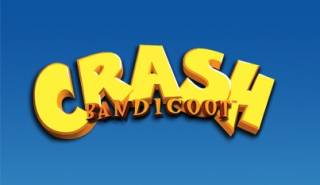
Log in to comment